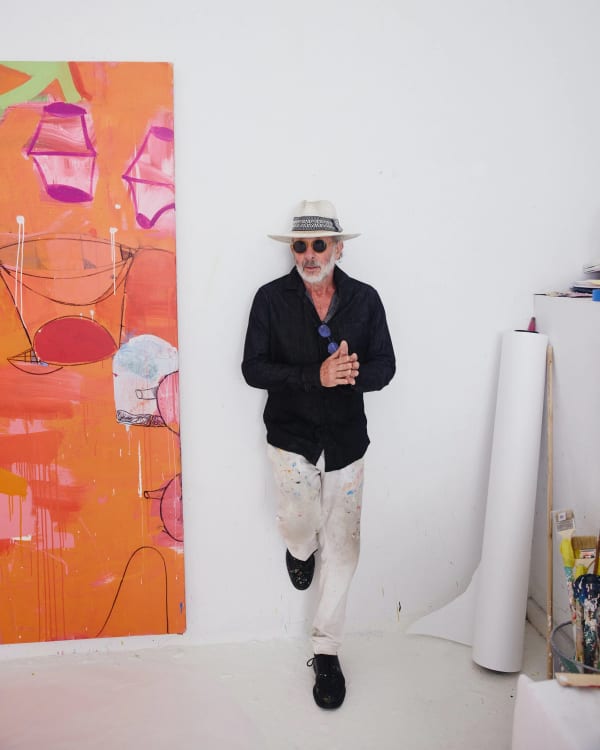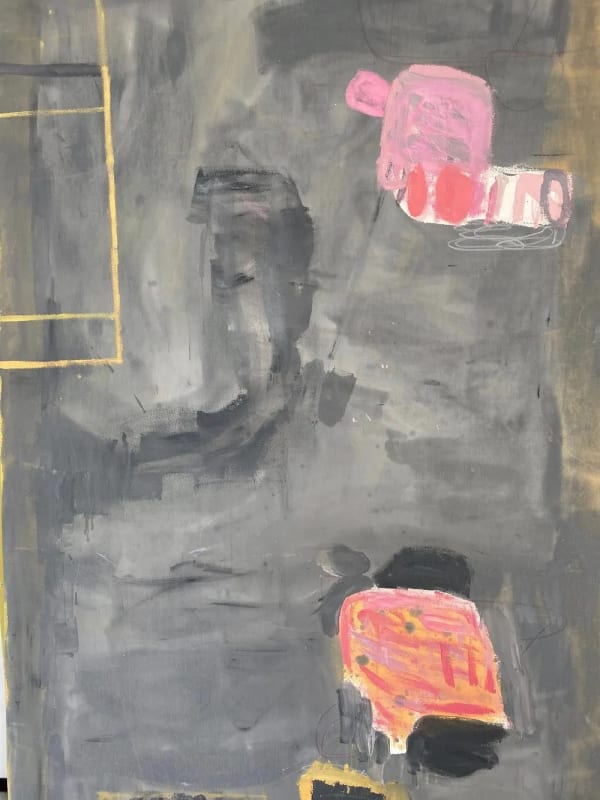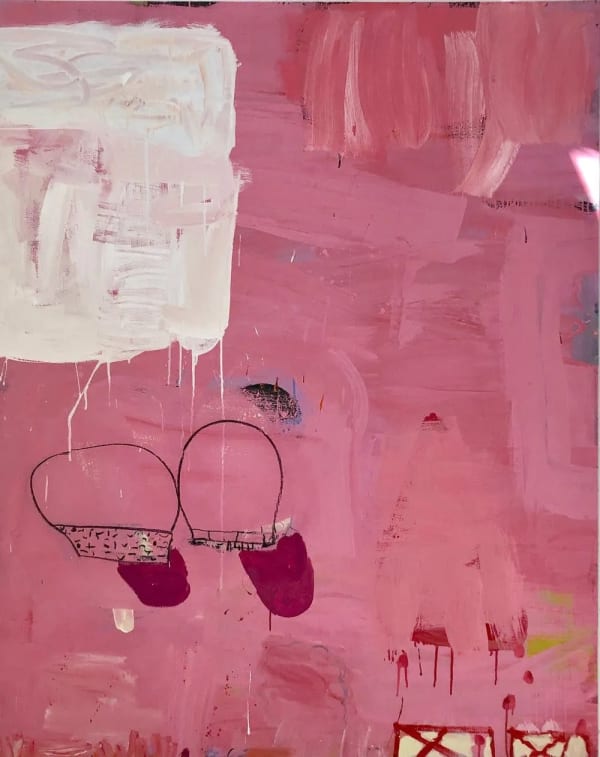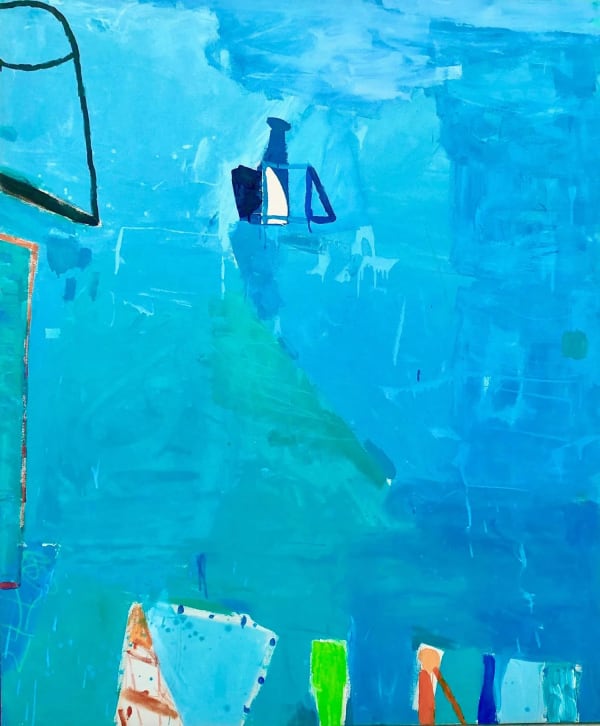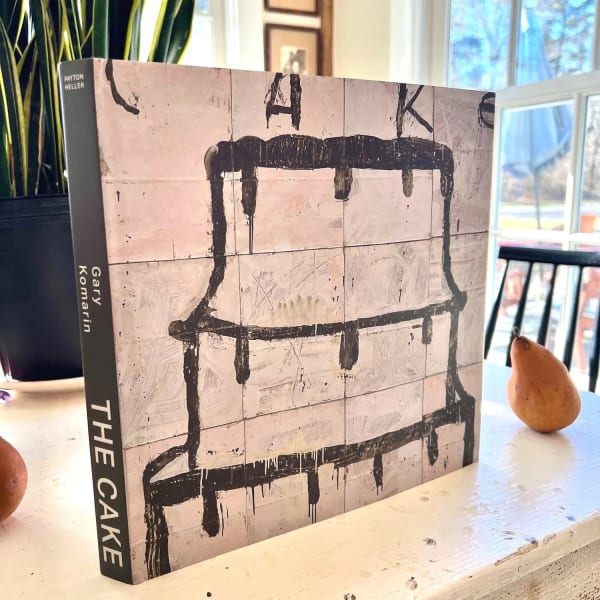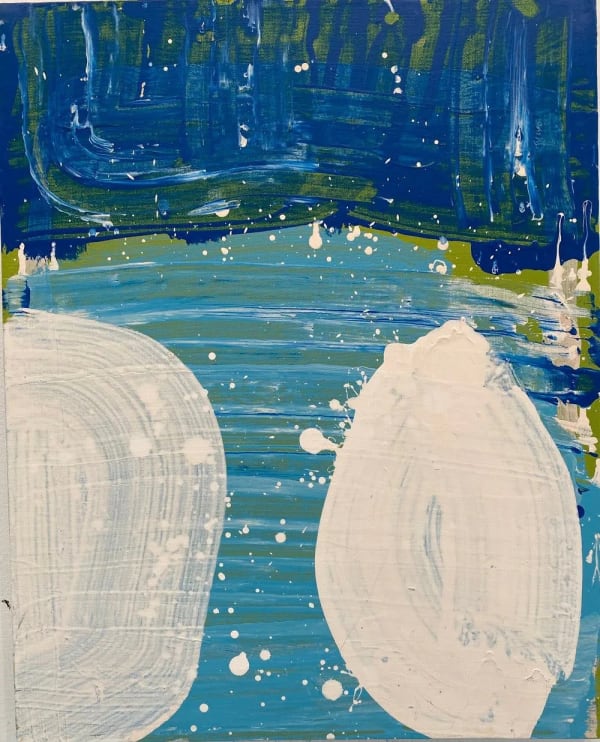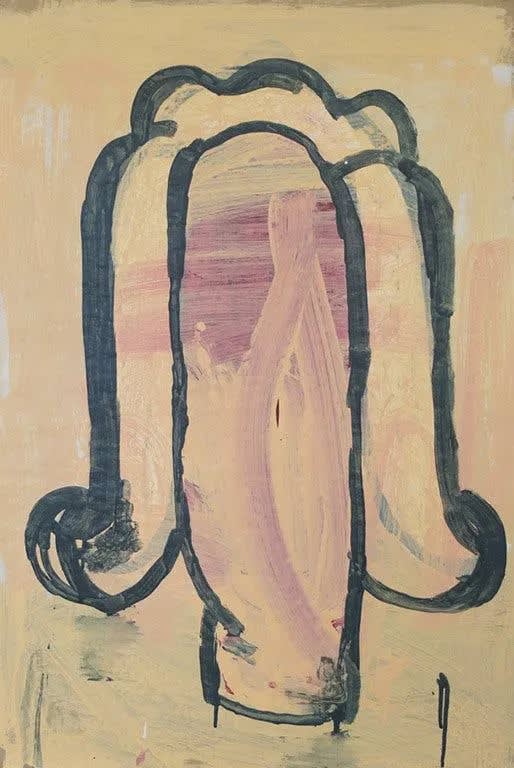Work that speaks to All: In talk with Gary Komarin
New York-born artist Gary Komarin, the son of a Czech architect and Viennese writer, brings influence from both into his iconic work. We sat down with him for a talk about his creative process, his recently launched book The Cake, and upcoming exhibitions worldwide. Now he is preparing for a show in London at Blond Contemporary, followed by Vienna, Venice, Hongkong, and Shanghai…
What does your life look like at your rural compound in American country Connecticut? Can you tell us more about the surroundings where you create your paintings?
I live in a very bucolic country area in Connecticut with green rolling hills and ponds and babbling brooks, tall pine trees, and oaks. In addition to the beauty of the landscape which feeds the soul - one can hear many birds singing in the early morning, also wild turkeys that sleep high in the trees. This area has a wonderful art historical and literary pedigree: Marilyn Monroe lived up the road in the early “1950” when she was married to the noted American playwright Arthur Miller. We also have Candace Bushnell who lived next door for years - well known for writing “Sex and the City” and the noted sculptor Alexander Calder just up the road. For me, these talented individuals give the area a certain richness and creative articulation.
Can you give us a sense of your fundamental tools and creative process?
Keeping things simple I work with handmade brushes and a concoction of water-based enamel paint. Sometimes mixed with spackle. One can thin this secret mixture down or thicken as needed. It dries quickly which we like much. I may draw on the canvas as needed with charcoal or crayon. Creatively I don't like to know where I am going in a painting, so I jump right in. I don't do preparatory drawings. I simply start somewhere and each mark affects the next. After a while, the painting takes on a life of its own and speaks back to me. This is a good thing.
Your iconic Cake paintings appear to depict the domestic scenes that came from your personal childhood memories – how did they inspire your artwork?
My mother was from Vienna and baked a lot of cakes when I was a kid living in New York. They were often a bit drippy and sloppy but very tasty as my mother did not follow recipes. she too liked to jump right in as it were. There was a lot of love baked into those cakes. My father was Czech and trained as an architect in Europe and then worked in this country. We grew up around a lot of blueprints and pencils and scribbled notes. I see the cakes as the marriage of the architectural and the domestic.
How did your book The Cake come about? Which parts of the book did you most enjoy working on? What can the readers look forward to?
We had many collectors and museum curators and art critics who love the cakes asking us and even urging us to do a substantial monograph on the cakes. We felt the time had come and designed a book with Payton Heller that showed not only the cakes but various oblique photos of objects in the studio and things and places that I look at or have touched in some manner. There is one black & white photo of my footprint in the sand in the Bahamas. We liked that photo as it was very playful and also visually lined up with the spontaneity of the cakes. A footprint in the sand has a short but very beautiful life. The book also has short essays and quotes about my work to further inform the audience about the cake that is now worldwide. The readers can next look forward to a significant monograph on the larger abstract paintings.
Which artists have had a big influence on your work?
Picasso and Matisse, the early Italian painters like Giotto and Fra Angelico cave paintings for their simplicity and power, Egyptian wall drawings and sculptures from 5,000 years ago. I am quite fond of children's drawings and paintings, and more recent works by Willem de Kooning and Mark Rothko, and Motherwell. And finally the great Italian painter of still life in the 50s Giorgio Morandi.
What do you see as the artist’s role in these times?
For me, the artist's role is to create beauty and make works that feed the Soul. A good painting must also challenge the viewer in a dialogue of some sort depending on the painting and the viewer. My task is to allow the painting to breathe and to not overwork matters. We like the viewer to be the final piece in the puzzle as it were.
New York, Paris, Tokyo - You've connected to various sights of the art world. What's your next stop?
My next shows will be in London and New York. We will most likely fly to London, then to Vienna where my mother and her mother were born and we hope to visit Venice which is a magical city. We may also travel to Hong Kong and Shanghai for exhibitions of Komarin once they are fully planned out.
Tell us more about your plans for the future?
I plan to do more books on the Vessel series and the French Wig. I am looking forward to further museum expositions worldwide. And we will travel as needed and desired in the coming years. I get a thrill, quite magical really that my work is so well appreciated around the world. One need not speak English to get involved with a Komarin painting. As my work speaks to the human condition the audience is multivarious and culturally very open-ended.
My work speaks to all people.
The newly launched book Gary Komarin - The Cake is available with shipping worldwide from paytonheller.co and Instagram @phbooks.co
For more on Gary Komarin’s studio check out garykomarin.com or his instagram @garykomarin
